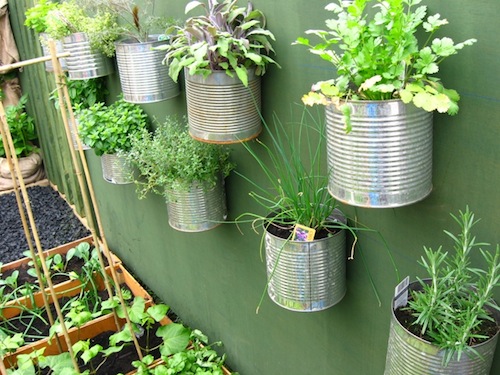
There’s been a gradual movement in popular culture toward trying to “regain one’s ecological footprint”. Grocery stores are making an effort to sell more organic and locally sourced foods and whether it’s taking up yoga or going for a run, we’re all trying to be healthier and more connected to our environment. And as a result, more and more people are beginning to realize the value of urban gardening.
Step One – Take Out The Lawn
When they’re cut they may give the neighbourhood a look of cleanliness and beauty, but grass is a notoriously greedy plant that requires a significant amount of water to maintain itself. This can sometimes be a problem if you’re located in a more arid climate prone to water shortages. They also require a lot of upkeep, and aside from their aesthetic quality, don’t produce food and sap nutrients from the soil. The main thing to keep in mind when starting your own urban garden is how to take advantage of space – sometimes it may feel like you’re playing Tetris trying to figure out how things will fit together.
Step Two – Raised Beds Or Pots?
There are two quick and easy methods when it comes to designing the infrastructure for your garden. Raised beds consist of building small hollow frames which can be filled with soil. The advantage of raised beds is that it allows you to carefully decide the ratio of soil to manure (or whatever other medium you decide to use) and it’s clean – the wooden edges of raised beds keep the soil in and keep the rest of your garden tidy. Pots are also an excellent option as well, allowing you to maximize the limited amount of space available to you.
Depending on where you live, and what sorts of things you want to grow, you may also decide to invest in a small greenhouse or build one of your own. Having a greenhouse, especially if you’re in more temperate climates, will extend your growing season, and give you fresh produce that would otherwise be out of season.
Step Three – Choosing Plants
Now that you have the foundation of your garden, it’s time to decide what you want to grow. This will also involve factoring in how much free time have to manage your plants – some plants require little maintenance, like herbs and corn. Because you likely have little room, it’s important to choose plants and vegetables that are high-yield and “stackable”. For instance, on a small plot you might have potatoes growing underground, pumpkins or squash growing on top, and stalks of corn growing in between.
Peppers, tomatoes, cucumbers, spinach, and corn are all reliable choices, and you should always keep in mind what sort of climate you’re growing – the colder the temperature, the hardier the crop. Different hose spray nozzles will help you with the amount of water used on your crops, as well as the style of irrigation, such as soaking or showering.
Step Four – Keep It Organic
When it comes to keeping pests out, lots of people fold and spend money on chemicals and sprays, which inevitably leaches into the soil and into the plants themselves. There is nothing worse than discovering the effort and time you spent on creating a garden has been ruined by a day’s work of aphids or ants – however, there are clean and organic methods for getting rid of them! Depending on the specific pest, there are a variety of options. For instance, mixing an egg-white and water solution and spraying it on plants will make an excellent deer deterrent.
Ultimately, it’s important to do your own research and make your garden welcoming for organisms that can eat the pests for you – spiders, snakes, and frogs are your friends!
Step Five – Have Fun!
Gardening should never be something that makes you grumble. If you’re not passionate and devoted to your garden, your garden will reflect this. Gardening is the perfect combination of work and play, and the pay-off is worth its weight: being able to cook a meal with ingredients you grew yourself. It is also the perfect family activity, and kids love playing in the dirt and watching things grow – you wanted to give them a reason to go outside and turn the TV off, now you have one.
About the author: Simon is a writer and content specialist who is addicted to being on the front page of anything. A graduate of Dalhousie University, he specializes in using the em dash too often. Currently, Simon rests his typing hands in Vancouver, Canada. Click here for another great article from Simon.
